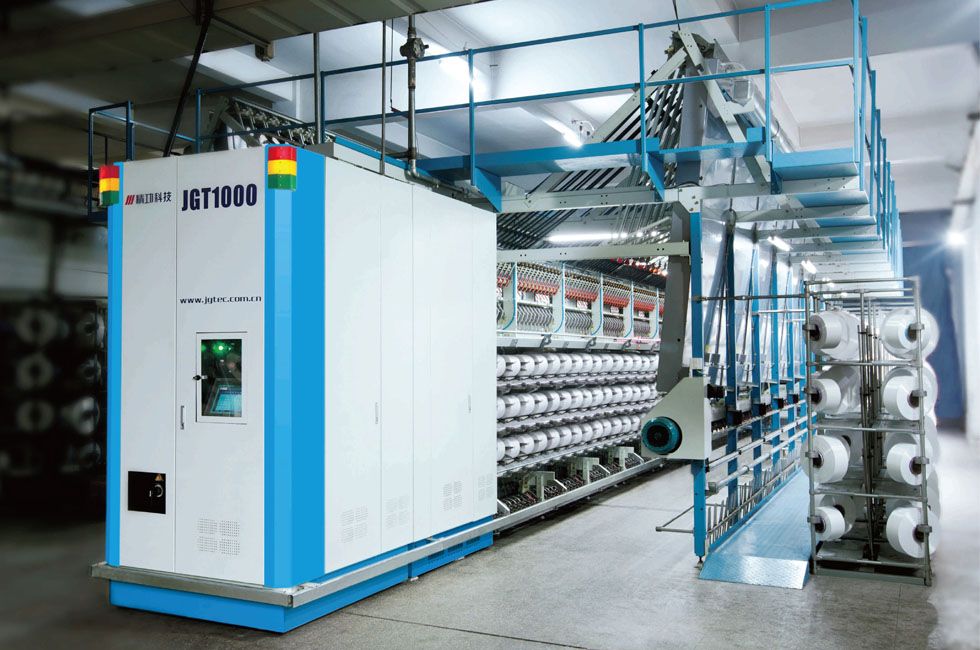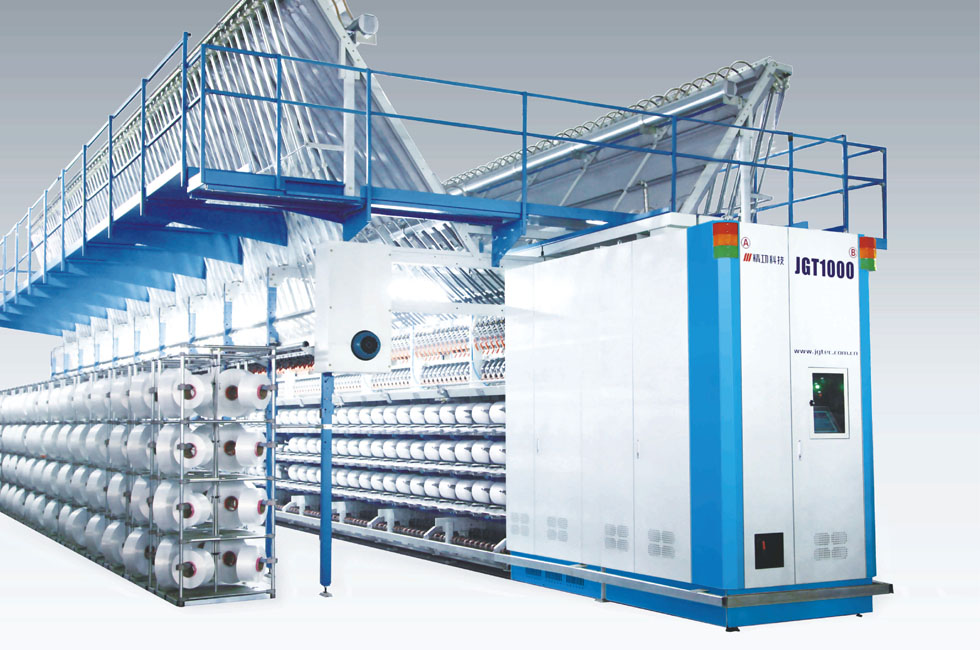What’s False Twist Texturing Machine?

False Twist Texturing Machine, Texturising Machine
False twist texturing machine mainly processing Nylon/POY yarn into false-twist DTY draw textured yarn.
False twist texturing machine for the texturing of synthetic threads in one handling position at a time, in which a heating device and a false twist unit are disposed within a false twist zone. In an after-treatment zone are disposed a second heating device and a counter-twist apparatus.
JGT1000V, VH Type False Twist Texturing Machine is mainly used to process POYyarn (polyester preoriented filament) into DTY polyester stretch yarn (DTY polyester stretch yarn) with low elastic energy through stretching and false twist deformation. If you choose to add network components on the equipment, you can also process network yarn.
False Twist Texturing Process, False Twist Texturing Principle
False-twisting is one popular texturizing process. In this technique, twist is inserted into a heated multifilament yarn running at high speed. The yarn is cooled in a highly twisted state, so that the twist geometry is set, and then the yarn is untwisted. Untwisting leaves filaments that are still highly convoluted, allowing the production of a textured yarn of much greater volume than the yarn would be in an untextured state.
False-twist texture is usually combined with drawing. Partially oriented (POY) nylon and polyester, which have been spun at extremely high rates and are already partially crystalline, are both drawn and textured in this way.
Think about holding a rubber band between two clamps and twist this band by turning it in the center. You will observe real twist on the left as well as on the right hand side. But each side is twisted into the opposite direction. One side is S-, the other side is Z-twisted. The number of twists on the right side equals the number of twists on the left side. As you release the twisting point, all the twist will disappear. You actually had created, what we call a ‘false twist’. All modern texturing machines operate according to the false twist principle.
False Twist Texturing Process Flow
The balanced stretched yarn bobbins are installed on the raw silk trolley or bench.
After the tension of the drawn yarn is adjusted, it first enters the shredder. When there is a broken end, the controller will drop the needle and sag, turn on the circuit, and the thread cutter will act to cut off the thread to prevent the occurrence of rolling. Between the feeding roller and the intermediate roller is the false twist deformation zone. The yarn is twisted and heated in the first hot box (deformation hot box), and after passing through the cooling zone, it is untwisted after passing through the center hole of the small rotor and the horizontal pin of the false twisting device.
The filament enters the setting zone after leaving the intermediate roll. The untwisted silk passes through the second hot box (setting hot box) to complete the setting. Between the exit roller and the auxiliary roller is the area for stabilizing and winding tension of the setting thread, and the thread passes through the thread breakage detector in this area. The yarn that has undergone false twist deformation is sent out from the auxiliary roll, passes through the oiling roll to the creel, and is wound on the bobbin. In the entire deformation process, the silk path is longer. In order to facilitate the operation and reduce the height and floor space of the equipment, the method of detouring according to the process is adopted in the production.
False-twisted yarn
False-twisted yarn is elastic, like a line drawn by steel saw teeth, with s and z twist directions, twist shrinkage, and steam shrinkage.
False-twisted yarn: The false-twisted yarn has uniform twist and consistent tension, and is suitable for a wider range of processing yarns. This kind of twisted silk also has potential curling and shrinking. The artificial silk produced with it has elastic surface, soft hand feel and soft luster. It is especially suitable for the production of imitation crepe de chine, imitation heavy crepe and plain crepe satin. This kind of artificial silk is twisted and untwisted on the twisting machine with ordinary polyester filament, and it is continuously moved forward. Finally, it is fixed at a certain temperature to fix the silk shape. Because the speed control is appropriate, it is generally lower than the speed of the chemical fiber twisting machine. The setting temperature is appropriate, generally lower than the temperature of chemical fiber setting. The determination of the optimum rotational speed and temperature is determined by the material and properties of the twisted yarn, which varies from yarn to yarn. Therefore, this kind of twisted silk maintains a certain degree of twist and maintains the elasticity of curling and stretching. The silk strips of the woven satin have a certain pattern, which is completely comparable to silk crepe de chine. Even an expert can hardly tell the difference between imitation silk and real silk just from the appearance and feel. And it is superior to silk products in terms of color fastness and so on. The products woven with false twisted silk have not only entered the high-end product series, but the sales price per meter can be increased by more than 30%, which increases the added value of the products.


